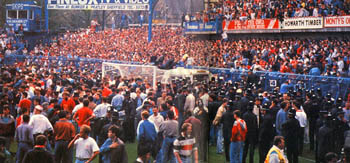Understanding the Hillsborough Disaster and Its Impact

The Hillsborough Disaster: An Overview
The Hillsborough disaster, which occurred on 15 April 1989 during an FA Cup semi-final match between Liverpool and Nottingham Forest at Hillsborough Stadium in Sheffield, is one of the most devastating tragedies in British sports history. The incident resulted in the deaths of 96 Liverpool supporters and left over 700 injured, marking a turning point in the safety and management of football matches.
What Happened?
The disaster unfolded as supporters were funnelled into an overcrowded standing area known as the Leppings Lane terrace. A series of human errors, poor planning, and lack of crowd control led to a crush that proved fatal for many fans. Eyewitness accounts detail horrifying scenes as people struggled for air and space, highlighting a systemic failure to protect the safety of attendees.
Aftermath and Inquiries
The immediate response from authorities was heavily scrutinised. Initial reports and interpretations attempted to shift the blame onto the victims, which led to public outrage and calls for justice. Over the years, multiple inquiries have been conducted, including the Taylor Report commissioned by the government, which recommended the abolition of standing terraces in football grounds and called for better safety measures.
Legal Proceedings and Ongoing Implications
Despite the significant findings of these inquiries, it took years for legal accountability to occur. In 2012, the Hillsborough Independent Panel was established, and its report, released in 2012, revealed previously concealed information. This led to a new inquest, which concluded in 2016 with a jury ruling that the victims had been unlawfully killed due to gross negligence by police and the state.
Commemorating the Victims
The Hillsborough disaster is commemorated annually, with memorial events hosted by Liverpool FC and supporters across the country. The devastating impact of the tragedy is not only felt by the families of the victims but also serves as a constant reminder of the need for accountability in sporting events. The fight for justice and proper recognition continues, as families seek to ensure that such an event never happens again.
Conclusion: Lessons Learned
The Hillsborough disaster has led to significant changes in how stadiums are managed and how fan safety is prioritized in the UK and beyond. While the tragedy remains a painful chapter in football history, it has also been a catalyst for reform. The ongoing dialogues about stadium safety and fan treatment reflect the enduring legacy of the 96 victims, as well as the commitment to ensuring the safety of every supporter in the future.








